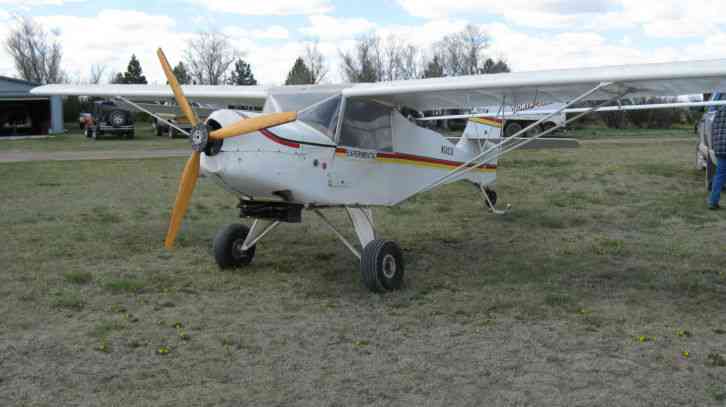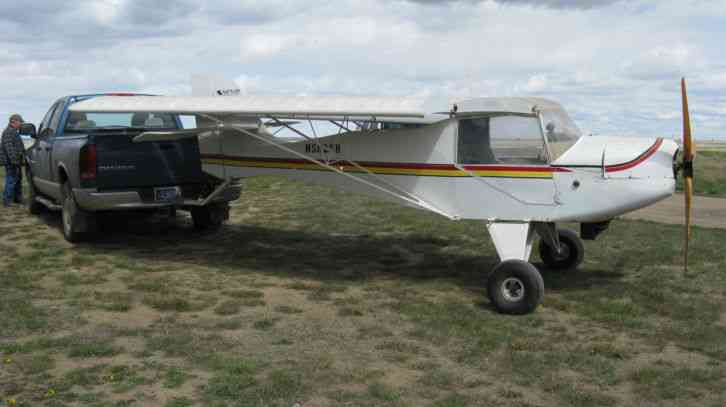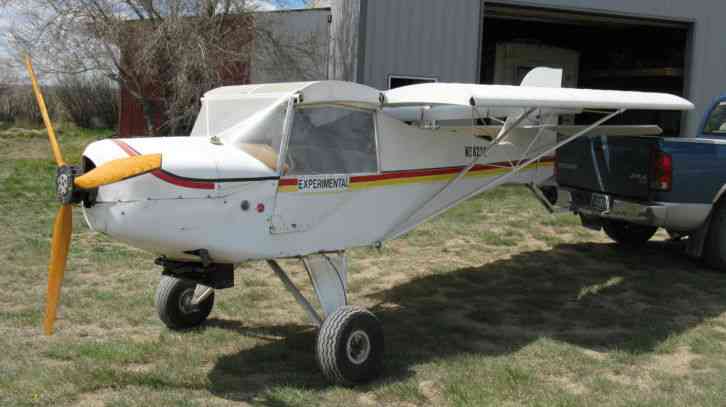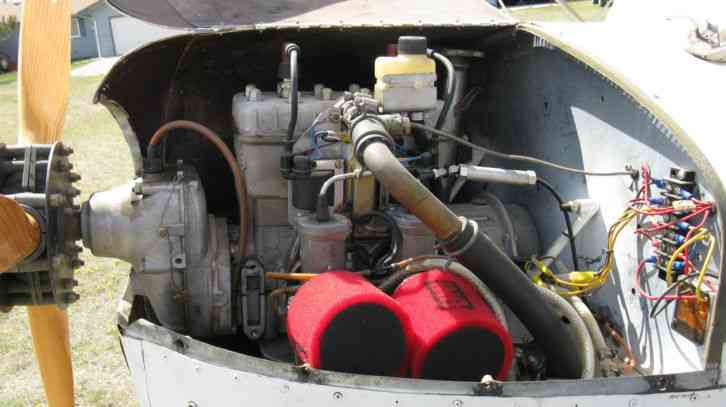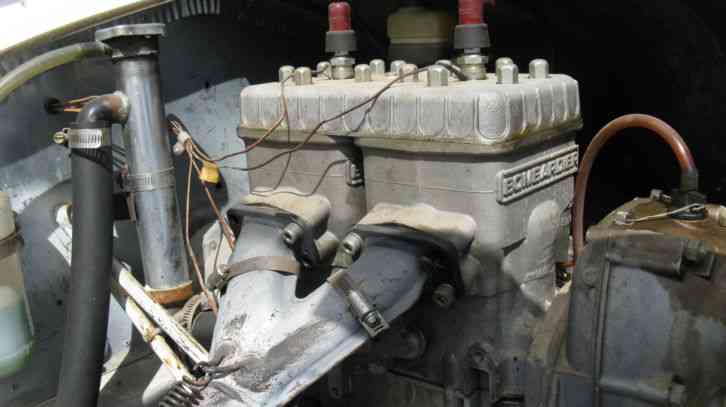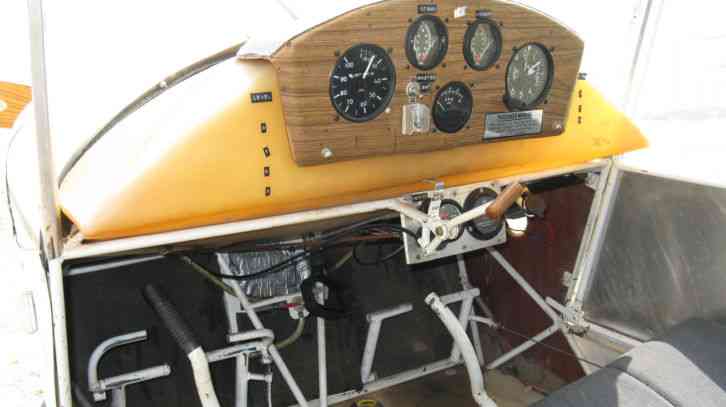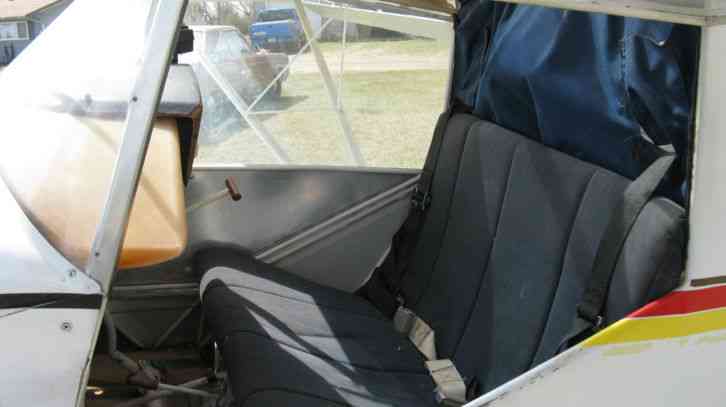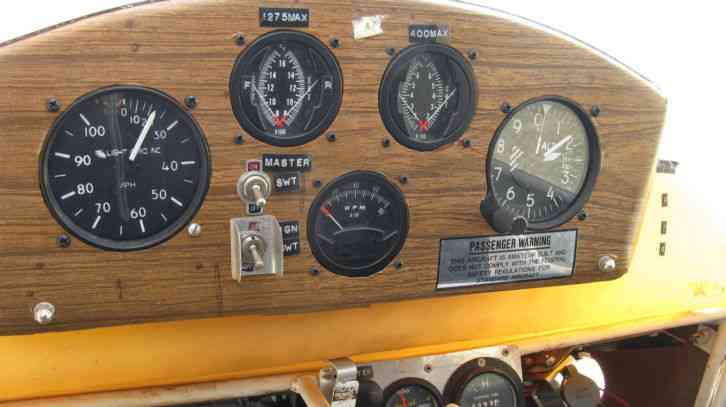For
your consideration is one Avid Flyer tail dragger airplane from Light Aero Inc. This aircraft was constructed in 1984 and has approximately 300 hours on
the air frame and 100 hours on the engine. This aircraft was assembled by my
father (an Avid Flyer dealer at the time) from a kit and took approximately
200-300 hours to construct. This was his demonstrator aircraft for his
dealership. The air frame is constructed 4130 chrome moly tube,
prefabricated by Light Aero Inc, the wings were constructed with 6061 T6
Aluminum tube spars and wooden I-beam ribs; entire aircraft is covered in heat
shrink dacron with a nitrate dope finish. FAA inspections were performed
on all structure prior to fabric installation and then again upon assembly
completion; all assembly was documented in writing and with pictures and
aircraft comes with the original complete assembly documentation, plans and
blue prints. Aircraft was designed by Dean Wilson and certified through
the EAA and is designated as experimental so repairs and Annuals can be
performed by the owner/pilot or a certified mechanic. This airplane is also on the FAA approved list and has a 5.7g rated air frame. Wing span: 29 10.5 Ft,
wing area: 117 Sq Ft, overall length 19 9.5 ft (wings folded), emply weight: 330-380 lbs, gross weight: 764 lbs, useful
payload is 384-434 lbs. Fuel capacity is 9 gal, range is 300 miles, original
engine was a 430 cuyuna twin (air cooled 43 Hp). Rate of climb is 1400
fpm, stall speed: 25 mph, max speed is 90 mph with cruise being 60-80 mph. Instrumentation includes air speed, altimeter, Exhaust gas temp gauges and
Tachometer; fuel level is sight only from cockpit. At about 200 hours the
original engine (430 Cuyuna) was replaced with a 521 Rotax liquid cooled engine
(65-70 Hp) and the original twin prop was replaced with the current adjustable
3 blade unit which is manually adjustable from the ground only. This
recommended engine change did improve the original rate of climb and cruise
speed significantly (Rotax engine has approximate 100 hours on it). Wing design
includes dihedral for increased lift gradient near the fusealage and the
vertical stabilizer is canted to adjust for prop wash; wing control surfaces
are termed "flaperons" as they are an integrated aileron and flap
together that work just below the trailing edge of the wing and maximize low
speed flight control. The wings fold back for storage and towing to the
airstrip; towing above 5 mph is not recommended. This aircraft is not an
ultra-light and you do need a private pilots license to fly it. Take off
roll is 75 Ft (solo pilot) and 200 Ft at max load (original engine); landing
roll is 100 ft (solo) and 150 at max load. The max service ceiling is
19000 feet although my father rarely went over 12000 ft. This aircraft
was last flown in the summer of 2014 and still handles like it did the day it
was completed. I have personally flown this plane and would say it handles similar to a J3 Cub with better performance and very gentle stall characteristics. My father used this aircraft to demonstrate the assembly/flight of the Avid Flyer kits and sold several as a result. He also use the airplane for flying to/from elk hunting camp in the fall. We are selling his airplane because at the age of 80 he has decided that it is time to stop flying. Ask questions and I will consult my father for more answers/pictures/general information. There are absolutely no written or implied warranties or liabilities from the seller of this airplane and upon successful purchase the buyer will be required to sign a release of liability document. Winner will provide a $500 deposit via paypal within 48 hrs of auction close with the balance due upon pickup of aircraft. Ask questions, and bid with confidence.
|
